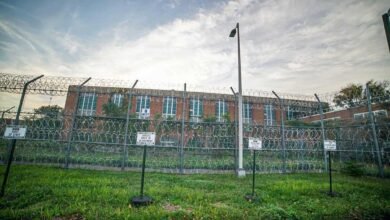

The G train will shut down 24/7 in phases over the summer, from June 28 through Sept. 3.
Marc A. Hermann / MTA
This summer’s long-dreaded shutdown of the G train is upon us, with planned work set to begin on Friday, June 28, shutting down the line 24/7 in phases until September.
If you live along the G’s route between Long Island City, Queens and Kensington, Brooklyn — or happen to use the line regularly or occasionally — here’s what to know about this summer’s shutdowns.
What’s happening?
The shutdown begins Friday night at 9:45 p.m., when G service will be suspended between Court Square in Long Island City and Nassau Avenue in Greenpoint, lasting till July 5. From then until Aug. 12, the G will shutter between Court Square and Bedford-Nostrand Avenues in Bedford-Stuyvesant. Finally, from Aug. 12 through Sept. 3, the G will close between Bedford-Nostrand Avenues and Church Avenue in Kensington.
What’s the shutdown for?
The MTA is working on a long-term project to replace the G’s 1930s-era subway signals with modern Communications-Based Train Control (CBTC), which allows trains to run faster and closer together. The existing Great Depression-era analog signals throughout the subway system malfunction frequently and are one of the primary drivers of subway delays; the L and the 7, the only two trains with CBTC fully installed, are among the system’s most consistently reliable lines.
Billions of dollars are being invested in re-signaling efforts, with work underway on the A/C/E lines in Manhattan, the F line in southern Brooklyn, and the Queens Boulevard Line in Queens serving the E, F, M, and R trains. The MTA also planned to re-signal the A/C in Brooklyn and the B/D/F/M in Manhattan, but those projects are now on ice because the pause on congestion pricing means the agency doesn’t have the money to do it.
It’s unclear what the pause could mean for re-signaling efforts in the MTA’s next five-year capital plan, which is set to be released later this year and until this month was expected to be reliant on congestion pricing money.

What do we do in the meantime?
In the interim, the MTA will run free shuttle bus service along the G’s corridor, with headways between buses as short as 1 minute during the weekday rush to as long as 10 minutes overnight on weekends.
To keep those shuttle buses from getting mired in choking traffic, the NYPD plans to beef up enforcement against illegal parking along the shuttle bus’s route, and the city’s Department of Transportation (DOT) has been hard at work installing new curbside bus stops, daylighting intersections to prevent parking in them, and restricting left turns at some intersections.
Despite calls from local elected officials and residents, DOT declined to build new bus lanes or busways along the shuttle route.
Shuttle buses will not run past Hoyt-Schermerhorn Streets station in Downtown Brooklyn; after that, the G shares its line with the F, which riders can use instead for normal service to Church Avenue. South of Church Avenue, the F is also being re-signaled and will be closed for eight weekends this summer, with shuttle service filling the gap.
While stations are unused by riders, old fluorescent lighting will be replaced by new LEDs, and elevators and escalators will be cleaned. Flushing Avenue and Greenpoint Avenues will, meanwhile, get the “Re-NEW-vation” treatment, a top-to-bottom deep cleaning.
What comes next?
This phase of the signal upgrade process involves replacing old interlockings, an operation so complex and laborious that it requires a full shutdown. The MTA will continue working on the re-signaling of the G till 2027, but no other phase of work is expected to require 24/7 shutdowns.
Once signal modernization is finally complete, not only will the G train run more reliably for its riders, but the MTA has expressed openness to restoring the G to full-length trains, potentially ending the mad dash riders must make to the middle of the platform before the doors of the truncated train close. Local elected officials have also called for the restoration of G service to Forest Hills, Queens, but MTA officials have not given any indication that’s under consideration.
Source link




